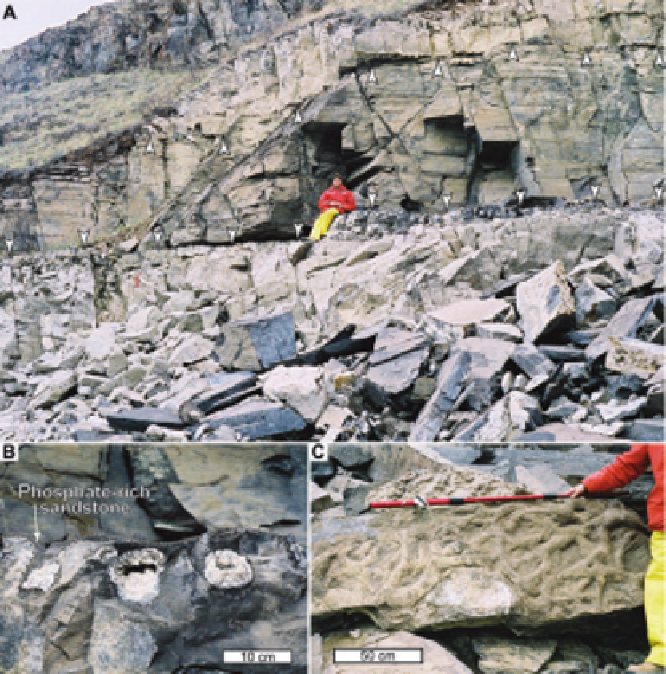Environmental Engineering Reference
In-Depth Information
FIGURE 9
Outcrop with substrate-controlled trace-fossil assemblages, Baldonnel Formation
(Late Triassic), Williston Lake, British Columbia, Canada. (A) Outcrop section at 49-57 m, West
Schooler Creek section, showing the location of the
Glossifungites
surfaces at a transgressive sur-
face of erosion (downward-facing arrows) and at a regressive surface of erosion (upward-facing
arrows). (B) A transgressive surface of erosion illustrating large flask-shaped burrows (cf.
Gastro-
chaenolites
isp.). This surface is the lower transgressive surface of erosion from (A). (C) Large
Tha-
lassinoides
isp. at the regressive surface of erosion (upward facing arrows in A).
4. SHELL DEBRIS IN CLASTIC SUCCESSIONS
4.1 Influence by Infaunal Taxa
Infaunal organisms exhibit a well-documented influence on the nature and
distribution of bioclastic material within the substrate. Bioturbators alter the
sediment in which they dwell primarily as a result of domicile construction
or while obtaining food (
Brenchley, 1981, 1982; Murphey, 1985; Probert,
1984; Ricketts et al., 1985
). Bioturbators have been subdivided into five
categories based on the nature and direction of biogenic particle movement:
downward-conveyors, upward-conveyors, biodiffusors, gallery diffusors, and
regenerators (
Fran¸ois et al., 2002; G
´
rino et al., 2003
).










Search WWH ::

Custom Search